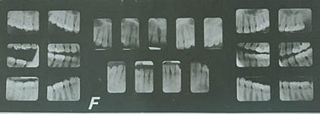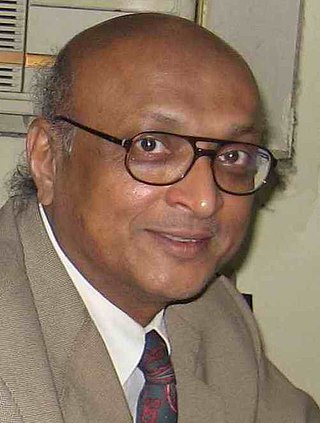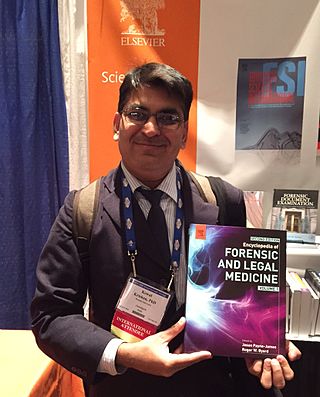
Forensic science, also known as criminalistics, is the application of science principles and methods to support legal decision-making in matters of criminal and civil law.

Forensic pathology is pathology that focuses on determining the cause of death by examining a corpse. A post mortem examination is performed by a medical examiner or forensic pathologist, usually during the investigation of criminal law cases and civil law cases in some jurisdictions. Coroners and medical examiners are also frequently asked to confirm the identity of remains.

The Royal College of Physicians of London, commonly referred to simply as the Royal College of Physicians (RCP), is a British professional membership body dedicated to improving the practice of medicine, chiefly through the accreditation of physicians by examination. Founded by royal charter from King Henry VIII in 1518, as the College of Physicians, the RCP is the oldest medical college in England.

Forensic dentistry or forensic odontology involves the handling, examination, and evaluation of dental evidence in a criminal justice context. Forensic dentistry is used in both criminal and civil law. Forensic dentists assist investigative agencies in identifying human remains, particularly in cases when identifying information is otherwise scarce or nonexistent—for instance, identifying burn victims by consulting the victim's dental records. Forensic dentists may also be asked to assist in determining the age, race, occupation, previous dental history, and socioeconomic status of unidentified human beings.

Medical jurisprudence or legal medicine is the branch of science and medicine involving the study and application of scientific and medical knowledge to legal problems, such as inquests, and in the field of law. As modern medicine is a legal creation, regulated by the state, and medicolegal cases involving death, rape, paternity, etc. require a medical practitioner to produce evidence and appear as an expert witness, these two fields have traditionally been interdependent.
Professor Patrice Mangin is a widely published forensic pathologist and toxicologist, director of the University Center of Legal Medicine in Lausanne and Geneva, Switzerland.

Law and Human Behavior is a bimonthly academic journal published by the American Psychology–Law Society. It publishes original empirical papers, reviews, and meta-analyses on how the law, legal system, and legal process relate to human behavior, particularly legal psychology and forensic psychology. The current editor-in-chief is Bradley D. McAuliff. Past editors have been Margaret Bull Kovera, Brian Cutler, Richard Wiener, Ronald Roesch, Michael J. Saks, and Bruce Sales.

Anil Aggrawal is a professor of forensic medicine at the Maulana Azad Medical College, New Delhi, India. He is known chiefly for his online journal, Anil Aggrawal's Internet Journal of Forensic Medicine and Toxicology. He joined Maulana Azad Medical College as a faculty member in 1985. Dr. Aggrawal proposed a new classification of necrophilia, and is considered the leading authority on necrophilia.

Harry Thomas Edwards is an American jurist. He served as a United States circuit judge of the United States Court of Appeals for the District of Columbia Circuit from 1980 to 2005, taking senior status in 2005, and a professor of law at the New York University School of Law.

The Journal of Clinical Pathology (JCP) is a peer-reviewed medical journal covering all aspects of pathology, published by the BMJ Group and co-owned by the Association of Clinical Pathologists. Diagnostic and research areas covered include histopathology, virology, haematology, microbiology, cytopathology, chemical pathology, molecular pathology, forensic pathology, dermatopathology, neuropathology, and immunopathology. Each issue contains reviews, original articles, short reports, case reports, correspondence, and book reviews.

The Journal of Forensic Sciences (JFS) is a bimonthly peer-reviewed scientific journal is the official publication of the American Academy of Forensic Sciences, published by Wiley-Blackwell. It covers all aspects of forensic science. The mission of the JFS is to advance forensic science research, education and practice by publishing peer-reviewed manuscripts of the highest quality. These publications will strengthen the scientific foundation of forensic science in legal and regulatory communities around the world.

Forensic podiatry is a subdiscipline of forensic science in which specialized podiatric knowledge including foot and lower-limb anatomy, musculoskeletal function, deformities and diseases of the foot, ankle, lower extremities, and at times, the entire human body is used in the examination of foot-related evidence in the context of a criminal investigation. Forensic Podiatry has been defined as:
The application of sound and researched podiatry knowledge and experience in forensic investigations, to show the association of an individual with a scene of crime, or to answer any other legal question concerned with the foot or footwear that requires knowledge of the functioning foot.
Forensic nursing is the application of the forensic aspects of healthcare combined with the bio/psycho/social/spiritual education of the registered nurse in the scientific investigation and treatment of trauma and/or death of victims and perpetrators of violence, criminal activity, and traumatic accidents In short, forensic nursing is the care of patients intersecting with the legal system.
The IEEE Transactions on Information Forensics and Security is a scientific journal published by the IEEE Signal Processing Society. The journal is co-sponsored by several of the subject societies that make up the IEEE: IEEE Communications Society, IEEE Computational Intelligence Society, IEEE Computer Society, IEEE Engineering in Medicine and Biology Society, and the IEEE Information Theory Society.

Idupuganti Bhooshana Rao was a leading figure in forensic medicine in India. He was the Founding-President of the Indian Academy of Forensic Medicine established in 1972. He was born in Dornakal, Andhra Pradesh, India.

The American Journal of Forensic Medicine and Pathology is a peer-reviewed scientific journal published by Lippincott Williams & Wilkins covering research on forensic medicine and forensic pathology. The current editor-in-chief is D. Kimberley Molina.
Pakkiriswamy Chandra Sekharan was an Indian forensic expert, writer and a former director of the Department of Forensics Sciences of the Government of Tamil Nadu. He was best known for his contributions in the investigations in the Rajiv Gandhi assassination case.

Kewal Krishan, an Indian forensic anthropologist, is a professor of physical anthropology and former Chair of Department of Anthropology at Panjab University, Chandigarh, India. He has recently been appointed as Dean, International Students, Panjab University, Chandigarh, India. He has contributed to the development of forensic anthropology in India. He is one of the very few forensic anthropology experts of the nation.
Medicine, Science and the Law is a quarterly peer-reviewed medical journal covering forensic medicine and science. It was established in 1960 and was originally published by Sweet & Maxwell; it is now published by SAGE Publications. It has been the official journal of the British Academy of Forensic Sciences since the journal and Academy were both established. The editor-in-chief is Peter Vanezis. According to the Journal Citation Reports, the journal has a 2016 impact factor of 0.689, ranking it 90th out of 147 journals in the category "Law" and 12th out of 15 journals in the category "Medicine, Legal".
The International Journal of Legal Medicine is a peer-reviewed scientific journal covering forensic science and legal medicine. It was established in 1990 and is the official journal of the International Academy of Legal Medicine. The journal is published by Springer Science+Business Media and the editors-in-chief are Heidi Pfeiffer and Andreas Schmeling.












